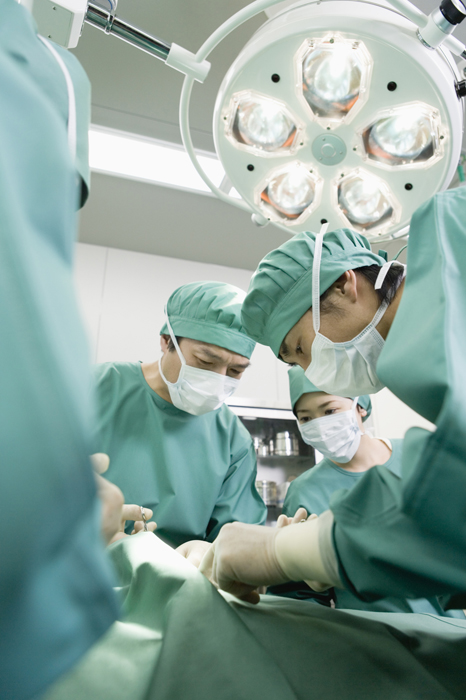The Day of Surgery
Check In
When you arrive at the Center on the day of your surgery you will check in at the Reception Desk and be asked to review the patient registration forms, provide copies of your insurance cards, pay any deposits due, and review the HIPAA privacy notice.
After your paperwork is completed, you will be escorted to the pre-op area.
Pre-Op Preparation
 Throughout your surgical experience at Palos Hills Surgery Center, the nurses and doctors will explain what they are doing, but you should always feel free to ask questions.
Throughout your surgical experience at Palos Hills Surgery Center, the nurses and doctors will explain what they are doing, but you should always feel free to ask questions.
A nurse will prepare you for your procedure. You will be given an ID band and asked to change into a patient gown. Your clothes will be safely secured in a locker until you’re ready to be discharged and you may be asked to remove any dentures, contact lenses, wigs, hairpins and eyeglasses. Rings, piercings, jewelry and valuables must be left at home. The center cannot assume responsibility for these items.
A nurse will then take your blood pressure, pulse, temperature, and respiration and review your health history, allergies and medications. Depending on the type of anesthesia you are receiving, an intravenous line (IV) for fluids and medications may be started.
Our anesthesiologist will meet with you, review your medical history and answer any questions you may have about your anesthesia. The type of anesthesia that you receive will be based on your specific needs. Your surgeon also will visit with you to explain the next step and answer any additional questions.
We ask that your companion remain on the premises during surgery in the event your surgeon needs to consult them, or you are ready to go home earlier than expected.
In the Operating Room
From the pre-operative area you will be taken into the operating room. The operating room is cool and brightly lit. Warm blankets are available for your comfort. You will be assisted onto a bed and a safety strap will be secured. A monitor for blood pressure will be placed on your arm. This will automatically inflate and deflate. Heart monitors will be placed on your chest. A clip will be placed on your finger to assess blood oxygen levels during surgery. If appropriate to your case, specially-designed inflation sleeves may be applied to enhance blood circulation in the legs.
The Recovery Phase
After your surgery is completed, you will be transferred to the recovery area. If you received any anesthesia or sedation, you will be transported to the Phase I recovery area. Your temperature, pulse, breathing rate and blood pressure will be monitored frequently. Oxygen by mask or nasal cannula may be given to help you wake easily. You may experience a “scratchy or dry throat.” You will be asked frequently to breathe deeply and cough to expand your lungs. You will be asked to move your legs and arms to check how awake you are; this will also promote blood flow to your legs. If needed, pain medication will be given. Medication for nausea may be given. This recovery phase will last about an hour or less.
In the second phase of recovery the nurse will continue to monitor your vital signs. Your companion will be allowed to stay with you. As tolerated, you will be offered coffee, juice, soda, cookies and crackers. Your written home care instructions about diet, activity, medications and follow-up care will be reviewed with you and your responsible adult companion. A copy to take home will be provided. Prescriptions may be given at this time. Your IV line will be removed just prior to discharge. Total pain relief may not be possible and some nausea may persist at discharge. You are responsible for getting prescriptions for pain filled at the pharmacy of your choice. Other prescriptions can be called in or sent electronically.
